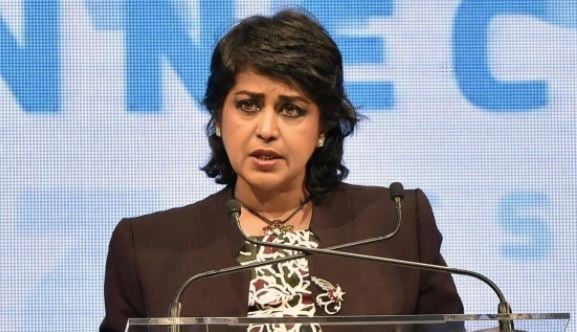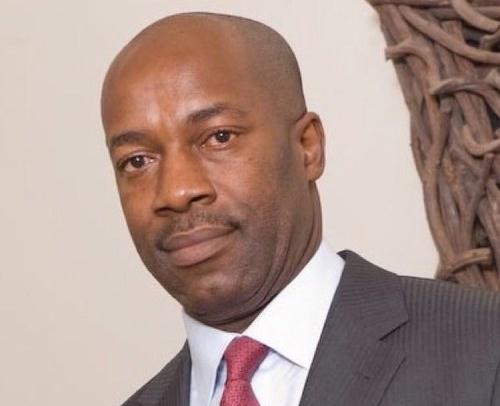In the past, stories on national development plans dominated the headlines especially in the early seventies. Professor Adebayo Adedeji (87), under General Yakubu Gowon, was the founder and chairman of the National Youth Service Scheme. He also the drafted the treaty of the ECOWAS which was established in May 1975 after over three years of arduous negotiations with sixteen governments and countries divided into Anglophone, Francophone and Lusophone spheres of influence. But years ago, he was more known as professor of national development plan, for he was the architect of the economic development and reconstruction of post-civil war Nigeria when he drafted the second and third development plans with inputs from brilliant technocrats’ years ago.
The first Nigerian national development plan was launched in 1962 with a six-year target that envisaged the spending of about $1,900,000,000 on development and productivity enhancing projects. The plan was prepared by the minister of economic development, Alhaji Shehu Usman Aliyu Shagari (93), in concert with United Nations and Ford Foundation experts including the late economist Wolfgang Stolper.
Actually, the preamble for the first development plan in Nigeria was formulated in 1945 as a result of the British government initiative for the promotion of economic and social advancement of the colonies stemming from the 1940 colonial development and welfare act. The plan made provision for the capital expenditure of a total of £55 million. The British government provided £23 million of the £55 million.
After the civil war, thanks to Chief Obafemi Awolowo (1909-1987) as minister of finance and his successor, Alhaji Shehu Shagari, Nigeria’s economy rose rapidly. The “super permanent secretaries” at that time impressed on General Yakubu Gowon to save for the rainy day by launching the second national development plan.
Advertisement
He then tapped on professor Adebayo Adedeji to serve as minister for national planning and reconstruction. Professor Adedeji had just graduated from Harvard University and who at the age of 36 had become a full-fledged professor at the University of Ife now Obafemi Awolowo University, OAU. In addition, General Gowon brought brilliant economists from the civil service to help Professor Adedeji in engineering the second national development plan. General Gowon created a central planning office (CPO) between the nineteen and twenty- second floors in the now abandoned Independence building at the Tafawa Balewa Square (TBS), Lagos. The office was headed by Chief Gilbert Prince Obiajulu Chikelu, who was then, a director in the Ministry of Statistics. Other members of that planning office included Chief Olu Falae, Chief John Oyegun, Dr. S.O. Omobomi, Joseph Oyewole Okunfulire, Mr. Boye Ilori, Mr. Peter Aliu, Mr Funso Adetiba, Chief Ayo, C. Olumese, G.C. Ndagoba, Mr. A. Ajijo, Chief Femi Akande, Chief Chukwuemeka Ezeife, Remi Olowude, Chief J.B. Ilori, Otunba Gbenga Tiamiyu and Chief John D. Edozien while the permanent Secretary then was Chief Ime Ebong. The deputy was Chief N. Okubadejo from Ijebu-Ode.
While Chief Chikelu was the director planning, he had three people who were working directly with him. They were Chief Samuel Oluyemi Falae, who later became the secretary to the government of the federation, Chief John Evboyomwan Kenneth Oyegun, who later renamed himself Chief John Odigie Oyegun when he became the governor of Edo state and Chief Dr. Chukwuemeka Ezeife, the Okwadike who later became Governor of Anambra state. Chief Oyegun became permanent secretary at the age of 36 before Chief Falae and Chief Ezeife. Following protest, Chief Falae finally became permanent secretary while Chief Ezeife who, because of the civil war was a senior lecturer at the Makerere University, Kampala in Uganda came back to be permanent secretary in 1982 in the ministry of labour and productivity and later permanent secretary, Nigerian Enterprises and Promotion Board.
The nation owes these officers a debt of gratitude.
Advertisement
The third national development plan which commenced on the 1st April, 1975 and was due to end on the 31st March, 1980 but was extended by nine months to give the various civilian state governments more time to prepare their programmes of activities for the fourth plan period.
Many projects commenced during the second plan were completed in the third plan period and reasonable progresses towards implementation of new ones were made. Examples of such projects include the cement works at Calabar, Ukpilla, Nkalagu, Shagamu, Yandev and Ashaka; the pulp and paper projects at Jebba, Calabar and Iwopin—four commercial vehicle assembly plants, two passenger car assembly plants; two petroleum refineries at Warri and Kaduna; two iron and steel plants at Ajaokuta and Aladja; and three steel rolling mills at Katsina, Jos and Oshogbo. Impressive achievements were also recorded in the transport sector. Over 10,000 kilometres of roads were built or rehabilitated, and among these were expressways such as the Lagos-Ibadan, the Lagos-Badagry, the Enugu-Port Harcourt and the Benin-Shagamu Expressways. New airports were built in most of the state capitals. A new international airport was built in Lagos, and new sea ports were developed in Lagos, Warri, Calabar and Port Harcourt.
The fourth and last development was launched by President Shehu Shagari on January 12, 1981 at the national assembly, then in Lagos, presided over by the then senate president, Dr. Joseph Wayas. He told the nation on that day that, “the fourth plan is being launched at a time when the country’s production of crude oil, which is the main source of government revenue and foreign exchange earnings, has virtually stabilised. A basic strategy of the fourth plan would therefore be the promotion of optimal utilisation of resources. Oil is a wasting asset. The resources generated from this sector must therefore be used to promote all round expansion in the productive capacity of the economy so as to ensure self-sustaining growth in the shortest possible time”.
When the military came to power, they jettisoned the idea of development plans and replaced it with rolling plans.
Advertisement
But these days, we don’t hear much of any development plan. We are bedeviled with internal security and insurgency to the extent that Nigeria has the highest number of displaced persons in Africa. I guess the only development plan we have now is the national assembly that consumes 30 to 35% of our capital votes.
Something is wrong with our system.
Views expressed by contributors are strictly personal and not of TheCable.
Add a comment







